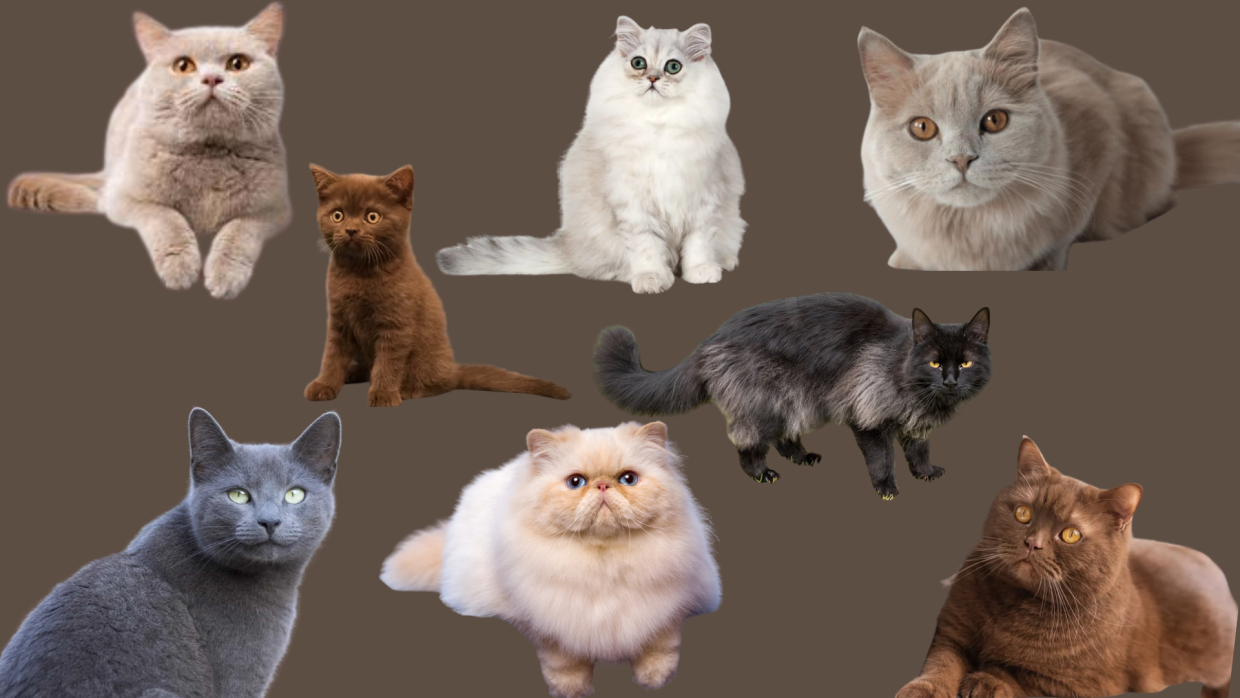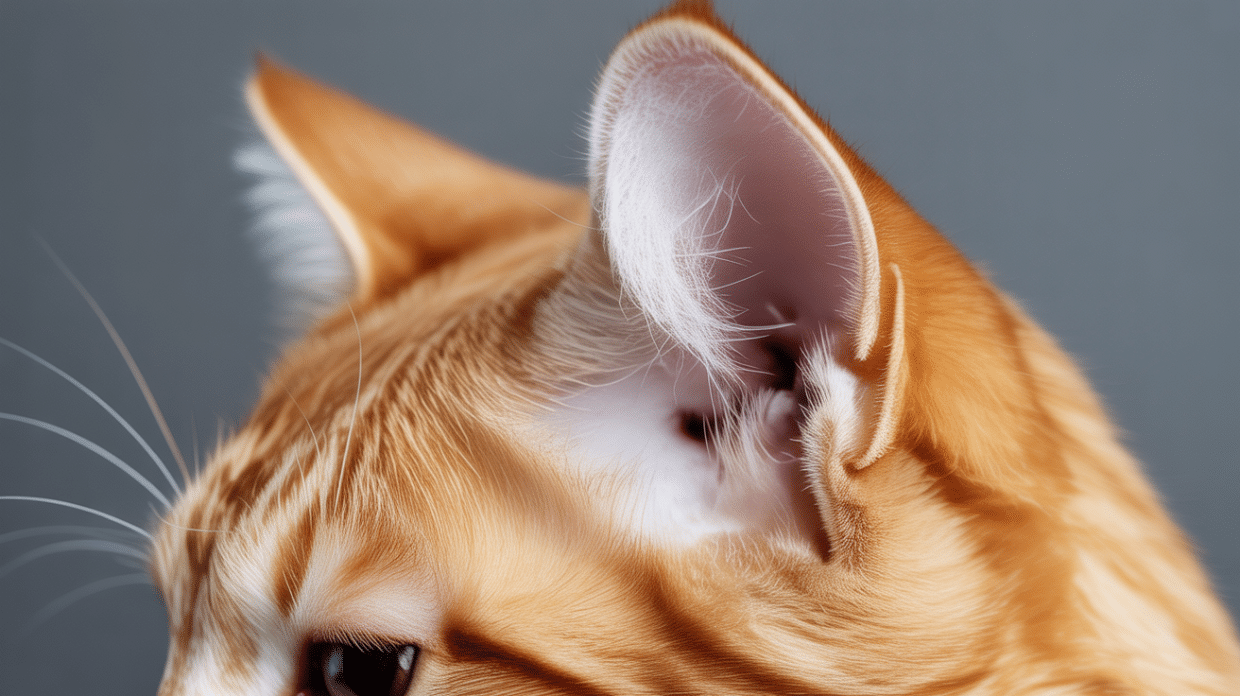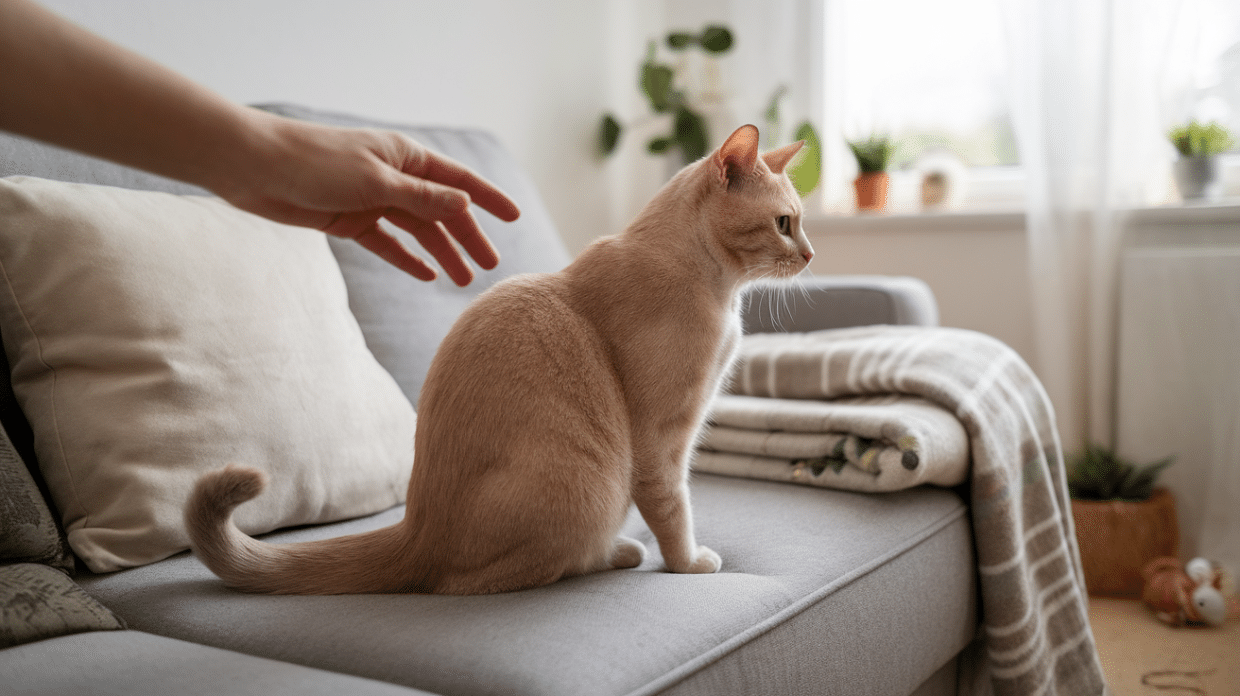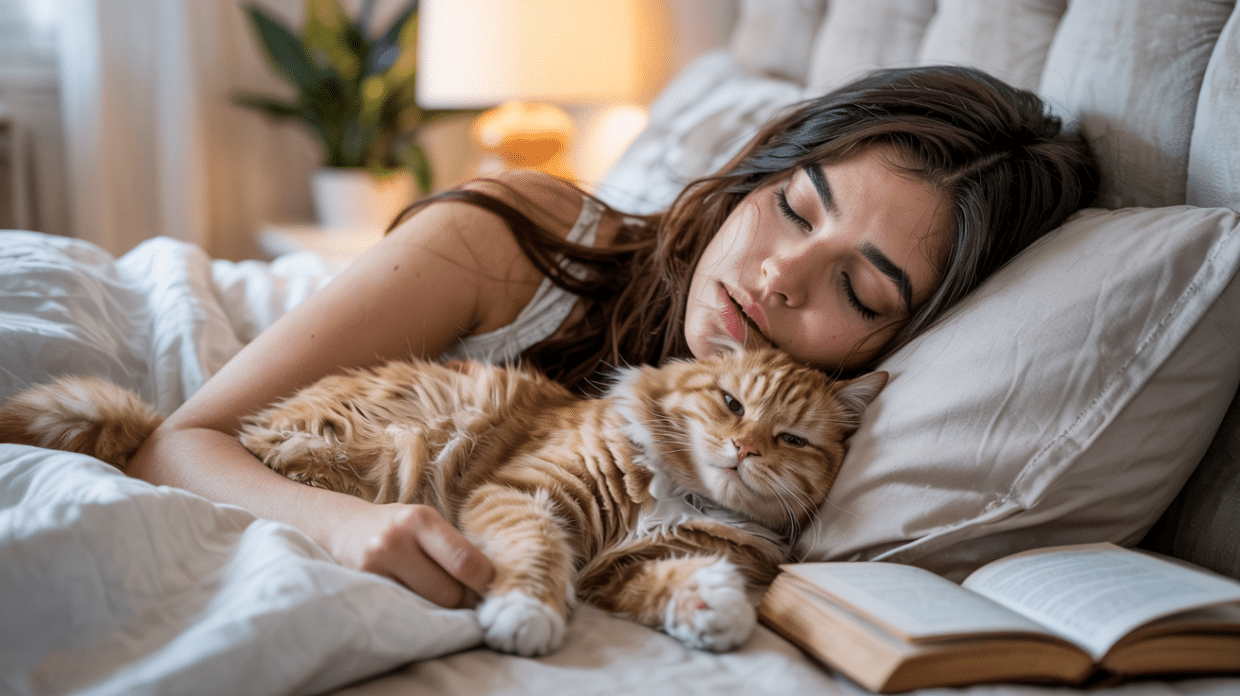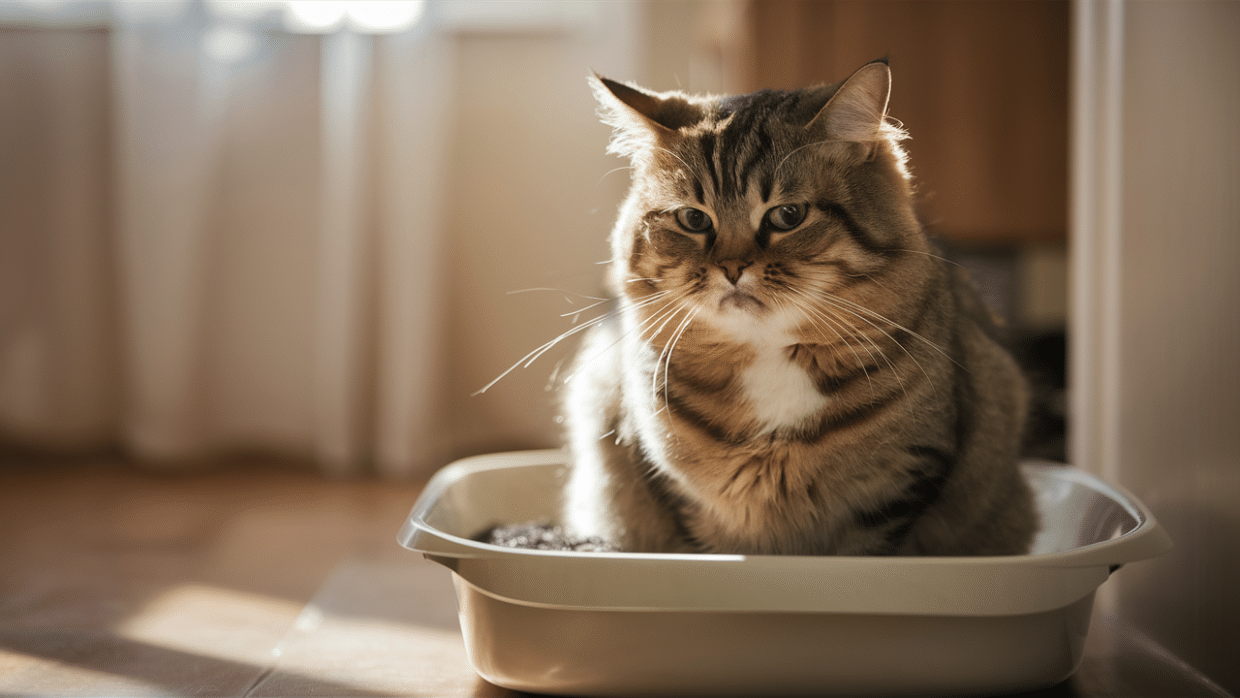Cats come in unique colors that can stop you in your tracks. Have you ever seen a cat with a coat so striking that you had to do a double-take?
These special colors aren’t common for a reason. Cat colors come from specific genes passed down from parents to kittens.
Some color combinations happen rarely because they need just the right mix of genes to show up.
Dilution genes can also change basic colors into softer, more unusual shades.
In this guide, we’ll show you the 14 most unique cat colors and patterns, what breeds have rarer colors and what exactly makes these colors rare!
Understanding Unique Cat Colors
Ever wonder why cats look the way they do?
Let’s break down the science of cat colors in a way that’s easy to get.
How Cat Colors are Determined
Cat colors are like a family gift that passes from parents to kittens. Each cat has color genes that mix together to create their special look.
Think of it as a color recipe!
Some cats have genes that water down or “dilute” their colors. This is how a black cat can have kittens with gray coats.
These color genes can also work together in different ways, making some color mixes very rare to find.
The Difference Between Colors and Patterns
Colors and patterns in cats are two different things.
Colors are the basic shades like black, white, orange, or cream that cover your cat’s fur.
Patterns are how these colors spread across your cat’s body – like spots, stripes, or swirls.
A cat can have the same pattern but show up in many different color mixes, making each kitty one of a kind!
Why are Some Cat Colors So Rare?
Have you ever wondered why you don’t see certain cat colors very often? It all comes down to science!
Let’s take a quick look at what makes some coat colors harder to find than others.
The Role of Genetics
Believe it or not, your cat’s genes play a big part in their coat color.
Certain color combinations require very specific genes from both mom and dad. And some gene pairings happen less often than others.
That’s why you might not see many cats rocking rare shades like chocolate or lilac.
Breeding and Its Effect on Rarity
Did you know that how cats are bred impacts color rarity too? When breeders want to get a specific color, they pair cats with the right genes.
The more they focus on unusual colors, the more likely those shades will pop up in the kittens.
So, human choices shape which colors become more or less common over time.
The Rarest Cat Colors
1. Chocolate (Brown)
- Genetic Breakdown: A cat must have two recessive chocolate genes (b/b) to turn black fur into a deep brown shade.
- Explanation: This rare color results from a mutation of the black gene, making the fur appear rich brown instead.
- Common Breeds: Havana Brown, Burmese, Oriental Shorthair.
- Fun Fact: The Havana Brown is the only breed known to have only solid chocolate coats.
2. Lilac (Lavender)
- Genetic Breakdown: Lilac is a diluted version of chocolate, requiring both recessive chocolate (b/b) and dilution (d/d) genes.
- Explanation: The combination of these genes softens the brown pigment, giving the cat a frosty, lavender-like appearance.
- Common Breeds: British Shorthair, Siamese, Balinese, Persian.
- Fun Fact: Lilac is sometimes called “frost” in pedigree cat registries.
3. Fawn
- Genetic Breakdown: Fawn is a diluted version of cinnamon, requiring two copies of the recessive cinnamon gene (b1/b1) and two dilution genes (d/d).
- Explanation: The dilution of cinnamon results in a soft beige or warm tan shade.
- Common Breeds: Abyssinian, British Shorthair, Oriental Shorthair.
- Fun Fact: Fawn-colored cats often have pinkish noses and paw pads.
4. Cinnamon
- Genetic Breakdown: A cat must inherit two copies of the recessive cinnamon gene (b1/b1) to display this warm, reddish-brown shade.
- Explanation: Cinnamon is a lighter variation of chocolate, appearing almost reddish in certain lighting.
- Common Breeds: Abyssinian, Ocicat, British Shorthair, Oriental Shorthair.
- Fun Fact: This color mutation was first recognized in Abyssinians, giving them their signature warm-toned coat.
5. Cream
- Genetic Breakdown: Cream is a diluted version of red (orange). A cat must inherit the dominant red gene (O) along with two copies of the dilute gene (d/d).
- Explanation: The dilution gene lightens the orange color to a soft pastel shade.
- Common Breeds: Maine Coon, Persian, Ragdoll, Devon Rex.
- Fun Fact: Cream-colored cats often have pink noses and paw pads.
6. Smoke
- Genetic Breakdown: Smoke coloring occurs when a cat has a dominant black, chocolate, or cinnamon gene (B, b, or b1) combined with the melanin inhibitor gene (I).
- Explanation: The melanin inhibitor gene prevents pigment from forming at the base of the hairs, creating a dramatic contrast between a dark coat and lighter roots.
- Common Breeds: Maine Coon, Norwegian Forest Cat, Persian, Turkish Angora.
- Fun Fact: When a smoke cat moves, the white undercoat is briefly revealed, giving a shimmering effect.
7. Blue (Gray)
- Genetic Breakdown: Blue is a dilute version of black. A cat must inherit the dominant black gene (B) but also receive two copies of the dilute gene (d/d) to lighten the black pigment into a soft gray.
- Explanation: The dilution gene weakens the intensity of black, giving the coat a bluish-silver hue.
- Common Breeds: Russian Blue, Chartreux, British Shorthair, Korat.
- Fun Fact: Russian Blues have a dense, plush coat that enhances their silvery-blue color.
8. Chinchilla
- Genetic Breakdown: Chinchilla cats inherit the melanin inhibitor gene (I) and a solid color gene (B, b, or b1), which lightens only the base of each hair.
- Explanation: This creates a sparkling silver or golden effect, where only the tips of the hairs are pigmented.
- Common Breeds: Persian, British Shorthair, Siberian.
- Fun Fact: The silver chinchilla Persian is one of the most sought-after Persian varieties due to its luxurious shimmering coat.
9. Albino
- Genetic Breakdown: Albino cats must inherit two copies of the recessive albino gene (cc), which completely prevents pigmentation.
- Explanation: This results in a cat with white fur, pinkish skin, and pale blue or red eyes.
- Common Breeds: Albino cats can appear in any breed but are exceptionally rare.
- Fun Fact: Albino cats have heightened sensitivity to sunlight and are prone to vision problems.
10. White (Non-Albino)
- Genetic Breakdown: The dominant white gene (W) prevents pigment from developing, regardless of the cat’s underlying color.
- Explanation: Unlike albino cats, white cats with this gene can have normal eye colors, including blue, green, gold, or odd eyes (one blue, one green).
- Common Breeds: Persian, Turkish Angora, Khao Manee.
- Fun Fact: Khao Manee cats, known as “Diamond Eyes,” are famous for their striking odd-eyed appearance.
Rare Cat Patterns
11. Tortoiseshell
- Genetic Breakdown: Tortoiseshell cats inherit two different color genes—one for black and one for orange—on their X chromosomes. Since males have only one X chromosome, tortoiseshell patterns almost always appear in females.
- Explanation: This pattern appears as a mix of orange and black patches, often swirled or mottled. Some tortoiseshell cats also have dilution genes, which create blue-cream torties instead of black-orange ones.
- Common Breeds: British Shorthair, Maine Coon, Persian, American Shorthair.
- Fun Fact: Tortoiseshell cats are said to have “tortitude,” a term used to describe their feisty and independent personalities.
12. Calico
- Genetic Breakdown: Like tortoiseshells, calicos inherit two X chromosomes carrying both black and orange fur genes, but they also have the white spotting gene (S), which adds white patches to the coat.
- Explanation: Calico cats have a mix of orange, black, and white fur, with clearly defined patches instead of a blended or marbled look.
- Common Breeds: American Shorthair, Japanese Bobtail, Manx, Persian.
- Fun Fact: Calico cats are often seen as symbols of good luck in many cultures, particularly in Japan, where they are called “Maneki-neko” or “beckoning cats.”
13. Colorpoint
- Genetic Breakdown: This pattern results from a temperature-sensitive version of the tyrosinase gene (C/c or C/c1), which limits pigment production in warmer body areas, allowing color to develop only on cooler extremities.
- Explanation: Colorpoint cats have a light-colored body with darker fur on the face, ears, paws, and tail. The most common point colors include seal, blue, chocolate, lilac, and flame.
- Common Breeds: Siamese, Balinese, Birman, Ragdoll, Himalayan.
- Fun Fact: Colorpoint cats are born completely white, and their markings darken as they grow, depending on their environment’s temperature.
14. Silver Pattern
- Genetic Breakdown: This pattern is caused by the melanin inhibitor gene (I), which suppresses pigment in the base of the hair shafts, creating a shimmering silver effect.
- Explanation: Cats with the silver pattern have dark markings over a lighter, silvery base. The effect can be seen in tabbies, shaded coats, and tipped coats like chinchilla silver.
- Common Breeds: British Shorthair, Persian, Siberian, Egyptian Mau.
- Fun Fact: The silver gene can also affect tabby patterns, resulting in stunning silver-striped or silver-spotted tabbies.
15. Tuxedo
- Genetic Breakdown: This pattern is created by the white spotting gene (S), which prevents pigment from developing in specific areas, creating a black-and-white pattern that resembles a formal tuxedo.
- Explanation: Tuxedo cats are primarily black with white patches on the chest, paws, and sometimes the face.
- Common Breeds: Domestic Shorthair, Maine Coon, British Shorthair.
- Fun Fact: Many famous cats, including the fictional “Sylvester” and real-life “Socks,” the White House cat of the Clintons, were tuxedo cats.
How to Identify Your Cat’s Unique Color
Do you ever wonder what makes your cat’s fur so special?
Let’s learn how to spot those subtle shades and understand how light affects our perception of color.
Tips on Checking for Subtle Shades
Take a close look at your cat’s fur in natural light.
See those lighter and darker patches? Those subtle tones can tell you a lot!
Part the fur gently with your fingers to peek at the root colors too.
How Lighting Affects Color Perception
Did you know different types of light can change how your cat’s color looks?
Sunlight shows their truest tones. But indoor lights can make colors seem off.
So before you decidedly confirm, check your kitty’s coat properly!
Cat Breeds that Have Rare Colors
Do you dream of having a cat that stands out in a crowd? Well, I’ve got great news for you!
When it comes to cats with unusual colors, a few breeds rise to the top.
The Russian Blue is known for its distinct silvery-blue coat that shimmers in the light.
Or how about the beautiful point coloration of the Siamese?
And let’s not forget the Bengal – those wild-looking spots and marbling are truly one-of-a-kind!
Conclusion
Wow, we’ve covered a lot about the world of unique cat colors!
From striking silvers to marvelous marbling, there’s so much variety out there.
As we learned, your cat’s unique shade is a fascinating mix of genes, dilution, and pigmentation.
Some colors only show up in certain breeds, while others can surprise you in any litter.
I hope this guide has helped you appreciate the science behind your kitty’s coat.
But more than that, I hope it has deepened your love for what makes your feline friend so special!

